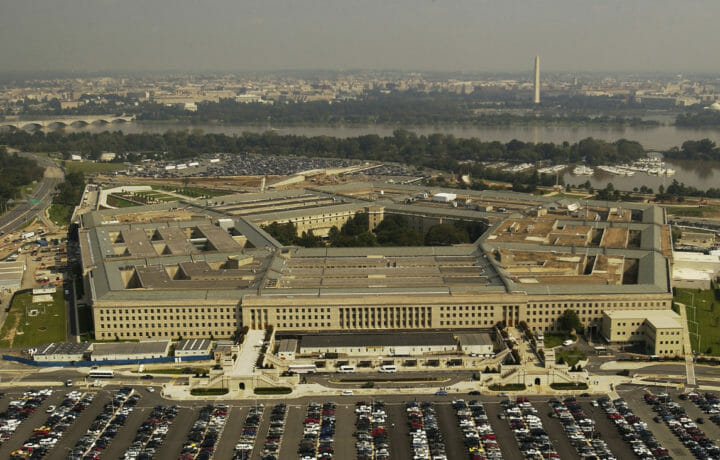The Pentagon is creating a new ‘transition concierge’ role that will act as “the translator between the non-traditional [companies] and the weapon system developers,” Dave Tremper, director of the Pentagon’s Acquisition, Integration and Interoperability (AI2) Office, said Thursday at Defense One’s future of defense acquisition summit.
The move comes as part of a bigger effort to bring more non-traditional government contractors into the defense sector. The Pentagon’s goal is to find employees who will serve as a go-between for new companies and the defense acquisition community.
According to Tremper’s office, the selectees will begin this new work in the next few months.
Lost in Translation
Tremper stated that a significant amount of conversations about capabilities and technology get lost in translation when it comes to working with and between those in the commercial sector and those in the warfighter industry. The Defense Department is working to lessen this loss by creating jobs, such as the concierge position, as well as creating several dedicated organizations and funding programs.
“There is a significant language barrier between the non-traditional commercial community and the Aegis weapon system developer,” Tremper divulged. “There’s a ton of acronyms [that] if you work in the military, you understand. There’s tons of acronyms that are used in their day-in-the-life.”
“The concept of a transition concierge is actually the doorway into that community, who can act as that translator between the weapon system developer and the non-traditional technology developer so that you can marry the two up together,” Tremper continued.
Tremper was named as the first director of the Acquisitions, Integration and Interoperability Office in October 2022, by Chris O’Donnell, the deputy assistant of defense for platform and warpon portfolio management in the Office of the Undersecretary of Defense for Acquisition and Sustainment.
“Mr. Tremper is our director for our Acquisition, Integration and Interoperability Office and what he’s trying to do is take the lessons that we’ve learned for integrated acquisition portfolio reviews that show the services are doing great jobs in long-range fires and integrated air-and-missile defense and cyber, offensive cyber in the JADC2 area — but [figure out] how do we actually get them to work together and what is the forcing function to make them work together,” O’Donnell said.
“From an acquisition perspective, we can talk to the service acquisition executives all we want, [but] unless there’s a requirement, unless there’s funding to help make that connectivity occur, it’s not going to occur. Dave’s job’s a difficult one. He’s going to have to cajole people to talk to each other and especially in JADC2. And when you talk to all the JADC2 leaders, they’re all talking to each other,” he added.
Tremper stated that the experience he gained in the role of AI2 director, combined with this new role in acquisitions, gives him the unique ability to see why some technology never moves past the innovation stage. This phenomenon is known as the ‘valley of death’.
Making Ideas a Reality
The next step in the process is to get that technology into production, and after that, train operators properly to use that technology, Tremper added.
The Pentagon’s next answer is the Rapid Defense Experimentation Reserve, established to help speed up the prototyping process.
By conducting multiple technology “sprints,” RDER aims to identify and experiment with warfighting prototypes in order to more rapidly field new systems to combatant commands, close capability gaps and address joint warfighting requirements. Focus areas include resilient communication, joint command and control, contested logistics and “asymmetric capabilities,” according to Heidi Shyu, the Undersecretary of Defense for Research and Engineering.
Tremper explained that the effort is to take prototyping to the “next step” by integrating it into systems during the experimentation process, where it can be ‘simultaneously certified and approved’.
As of December 2, the Pentagon has already green-lit three ‘pretty special’ RDER capabilities.
“We had a classified DMAG, okay. So, there were three initial experiment[s] we’ve gone through that proved military utility. And all three of those are moving forward, okay. I can’t really get into a lot of the specifics, because you got to remember one thing, okay — RDER is scenario-based experimentation with a focus on joint warfighting capabilities, right, and pushing capabilities out as quickly as possible. So, these are the capability that’s maturing and going through and pushing out. So, I don’t want to tell China what we’re doing specifically, but the pipeline is started,” Shyu told reporters at the conference.
The Pentagon declined to identify the capabilities that were approved.
The only information that was released was by Shyu, saying that these capabilities are not part of the Defense Department’s Replicator initiative, which aims to field thousands of autonomous systems in less than two years.
“I will say [they could be fielded] quite quickly, that’s exactly it. We’re ready to go into production — as long as there is production money,” she told reporters.
Shyu told reporters that her number one fear is a yearlong Continuing Resolution because it will create problems.
How will streamlining the path to innovation affect the implementation of new tech during training and an actual operation? Is this a good risk or is this a bad risk that puts operators in danger? Could this lead to more training accidents? Is the risk worth the reward?




